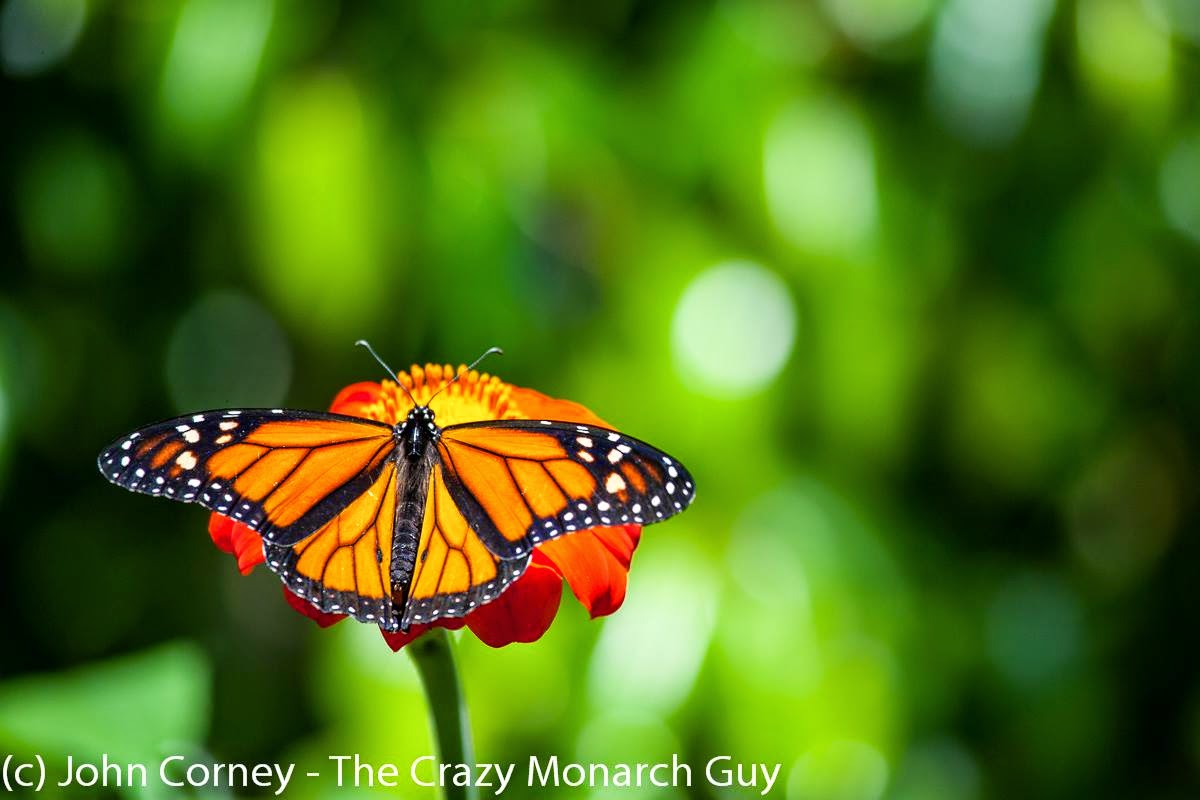I received a message today from someone asking about the pros and cons of raising monarch caterpillars indoors. Her husband built her a really nice netted enclosure in which to grow milkweed outside, but she feels that despite the netting, predators are still taking her caterpillars.
I raised indoors about 150 - 200 caterpillars to butterflies last year so I can definitely give you the pros and cons. In a nutshell there is one of each:
Pro: More monarch caterpillars will make it through the full life cycle and grace the skies with their beauty and lift our spirits to the heavens.
Con: It's a lot of work and a lot of time! Cleaning your enclosure daily, providing a constant supply of milkweed, and coming up with a solution to the problem of where to let the caterpillars pupate will become a daily obligation and burden for you. Having done it for one season, I've retired from caterpillar farming and this year am leaving it to nature to sort it out. So far it's not been too bad and about 50 butterflies have made it.
The one big factor I know that is behind you even thinking of bringing your caterpillars inside is that left to their own devices outdoors, most of them are going to become food for something. This despite all you will read about how the milk in the milkweed is toxic and distasteful and acts as a natural defence against predators. Perhaps that was true before exotic predators were introduced such as the Asian paper wasp, but these days, it's definitely a war zone out there for our beloved monarch caterpillars. The chief predators from my experience are Asian paper wasps. They are on constant patrol from about late May here in Southern California and will pick up many of your caterpillars, especially in their early instars (growth stages). I have also seen praying mantis eating caterpillars of any size as well as the butterflies - they even know to lie in wait by the flowers for the butterflies to come.
So if this is your first year at attempting to help out with the monarch butterfly population, then I know from my own experience that it is very disappointing to finally get butterflies visiting your yard and laying eggs, only to see none of them reach maturity and "butterflyhood". So go for it if you want, but you must make a commitment of time daily to tend your caterpillar zoo.
Here's how I ran my personal zoo last year.
I purchased this
small lidded acrylic aquarium from Amazon. I placed a paper towel on the bottom and then three small vases filled with water and milkweed inside the tank. Daily I changed the paper towel, topped up the milkweed.
Once the caterpillars entered the 5th instar (the final stage of the caterpillar stage before pupating into a chrysalis) I would remove the caterpillars and put them into individual glass jars with a piece of cardboard for a lid. I secured the lids to the jars with a piece of scotch tape. (For any 5th instar caterpillars that I bring in from outside currently I just use a piece of paper towel secured across the top with a rubber band). I would drop a couple of milkweed leaves into the jars while the caterpillar was still eating and growing - maybe 2 or 3 days. I would shake out the friss (that's caterpillar poop to most people) before dropping fresh leaves into the jars.
Once the caterpillars were ready to pupate, they would climb to the top of the jar and pupate hanging from the cardboard lid. At some point before the butterfly emerged (10 to 14 days), I would hang the lid inside one of these
picnic food tents I also got from Amazon where they would eclose (hatch/emerge) and I would release them at the end of the day when I got home from work.
Here are a couple of things I learned later that would have saved me some time, well actually, a lot of time. First, you don't need to make air holes in the cardboard lids; I spent hours punching four holes in each lid! The caterpillars are never going to use up all the oxygen in the jar, nor is the makeshift lid likely to be airtight. Second, I spent a lot of time stringing up the lids in the food tent. Now if ever I am going to move a chrysalis I detach it and hang it from string. Here's a basic rundown on how to do that:
Tie a piece of 0.5mm nylon cord (
something like this at Amazon) around the stem of the chrysalis using a non-slip knot (I use a "reef knot" that I remember from my days as a boy scout - left over right and under, right over left and under). Once you have secured the knot around the black stem gently pull down dislodging the fine cobwebby mesh that the caterpillar makes to hang his black stem from. Then I just tie the chrysalis to a twig in a tree out of the sun - chrysalises do not do well in full sun.
So that's my brief rundown on my method of raising monarch caterpillars indoors. Let me know in the comments if you have any questions and I'll try and answer them if I can. Perhaps you have your own technique or ideas you would like to share too. Please do. As they say, there's more than one way to skin a "cat".
Happy monarch caterpillar farming!





















